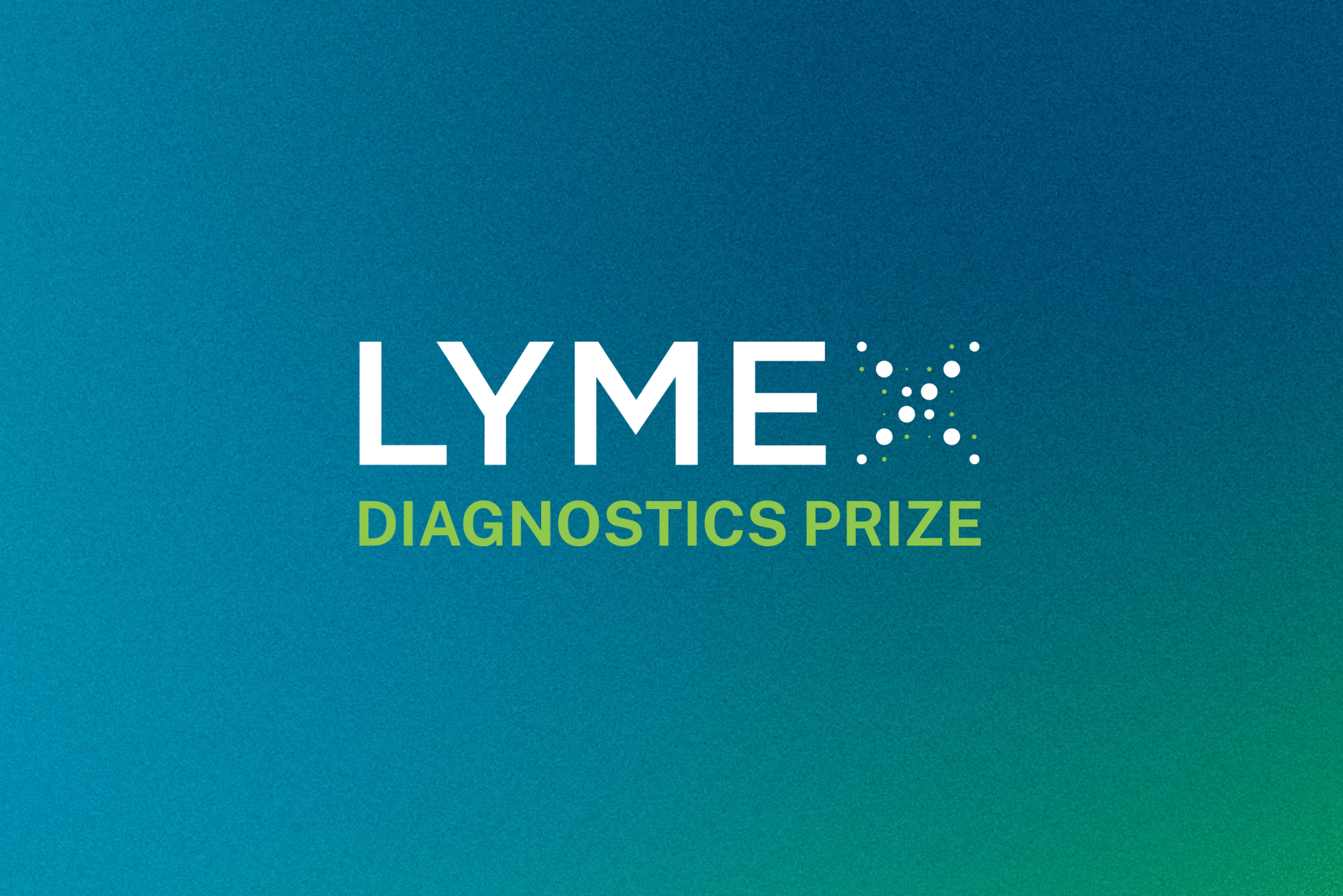How 10 innovator teams are meeting an urgent need for better Lyme disease testing.
May is Lyme Disease Awareness Month. This year, the LymeX Innovation Accelerator (LymeX), a partnership between the U.S. Department of Health and Human Services (HHS) and the Steven & Alexandra Cohen Foundation, is marking the occasion by recognizing the 10 teams participating in Phase 2 of the LymeX Diagnostics Prize. The ultimate goal of the multiphase competition is to nurture the development of diagnostics toward Food and Drug Administration (FDA) review.
The current two-tier antibody testing system — originally developed in 1994 for disease surveillance, not as a stand-alone diagnostic test — relies on the presence of antibodies and can only be used accurately four to six weeks after a patient becomes infected. Early diagnosis and treatment is critical, and better tests would bring greater peace of mind to the millions of Americans who work and play outdoors as the weather gets warmer and ticks become more active. There’s an urgent need for diagnostics innovation, and the LymeX Diagnostics Prize, designed and produced by Luminary Labs through a NASA Tournament Lab contract, is showing that it’s possible now.
Applying translational research to diagnostic innovation
Through September 2023, 10 teams are participating in the Phase 2 virtual accelerator, which offers access to virtual learning, mentorship, biorepository subject matter expertise, and networking opportunities. With prior work in areas ranging from sepsis to genetic sequencing and glycomics, the accelerator cohort is applying a broad range of expertise in their proposed next-generation diagnostics.
“The unique part of our sepsis testing is that we’re able to do very, very sensitive detection directly in blood,” said T2 Biosystems Director of Molecular Sciences Dr. Jessica Snyder. T2’s test uses magnetic resonance technology to identify Borrelia burgdorferi (a bacteria that causes Lyme disease) DNA in whole blood. “We’ve found some unique processes and chemistries that allow us to do detection directly in blood when there are only one or two cells there.”
“The tick that transmits Lyme disease also transmits other pathogens, such as anaplasmosis. Ideally, we would have one or a smaller number of diagnostic tests that could detect multiple organisms,” said Massachusetts General Hospital Assistant in Medicine and Physician-Investigator Dr. Jacob Lemieux. MGH’s test uses genetic sequencing to identify low-abundance DNA and RNA in plasma. “The approach that Dr. John Branda and I are working on is very promising in that regard because sequencing is unbiased; it can detect any kind of nucleic acid.”
Accelerating innovation through cash prizes and expert resources
By using a prize competition model, the LymeX Diagnostics Prize offers cash prizes alongside a range of non-monetary resources. The competition is designed to stimulate the market for Lyme disease diagnostics by helping entrants overcome diagnostic development barriers with prize funds and technical assistance — while also fostering cross-disciplinary collaboration.
“In traditional academic labs, it’s hard to find opportunities to do translational research,” said Tufts University Lyme Disease Initiative Director for Translational Research Dr. Peter Gwynne. Tufts’ test identifies a short-lived lipid antibody present in serum during initial stages of infection. “The project and the team came together around the LymeX Diagnostics Prize because finally, there’s a natural reason to start thinking about translation at work and building those networks.”
“What I find most exciting and useful are the one-on-one office hours [offered by the LymeX Diagnostics Prize],” said InBios International Director of New Product Development James Needham. InBios’ test uses machine learning to identify early antibody generation and increase diagnostic data points. “Having access to that expertise to just pick their brains and understand where they’re coming from is highly important, especially when we’re coming at this from a different diagnostic perspective.”
“It’s really interesting to see what our colleagues (I don’t want to say our competitors) are doing. Because this may end up being a collaboration between a company and a university, or two universities or two companies,” said Drexel University College of Medicine Assistant Professor Dr. Mary Ann Comunale. Drexel’s test identifies glycan biomarkers on antibodies in serum. “And I think part of our challenge is even seeing if we can all work together in some way as well.”
Prioritizing testing accessibility in diagnostic design
Improving testing accessibility is important to improving patient outcomes, and teams are already beginning to consider the issue with the help of clinical studies and device design resources. Over the summer, the cohort will participate in roundtable discussions with patients and clinicians as they refine their concepts.
“We’re meeting with a local clinic that serves immigrants and underserved populations. They provide care to many outdoor workers who are at higher risk of getting tick bites,” said George Mason University Center for Applied Proteomics and Molecular Medicine Co-Director Dr. Lance Liotta. GMU’s test monitors protein biomarkers in urine and uses an at-home urine collection method. “Workers who have a dark skin tone are less likely to be screened for tick bites and are at higher risk of late diagnosis, delayed treatment, and progression to disseminated disease.”
“Importantly, our tests are designed to be run on equipment that’s already in diagnostic labs today for COVID testing,” said BlueArc Biosciences founder and Chief Technology Officer Mark Eshoo. BlueArc’s test is a direct diagnostic designed to identify unique B. burgdorferi molecular biomarkers in blood. “If you have to buy a $400,000 instrument and have a full-time person running it, that’s a barrier to entry. We want to make sure that our test is available to all clinicians and their patients.”
Improving treatment and spurring new innovation
The LymeX Diagnostics Prize is setting a new bar for innovation in disease diagnostics. If tests are successfully validated, the cohort’s work could help improve Lyme disease treatment overall — and could also advance diagnostics for other infectious diseases.
“We designed this instrument to fit into the workflow of any hospital and to be easy enough to use so that minimal training is required,” said HelixBind Chief Business Officer David Steinmiller. HelixBind’s test is a molecular diagnostic assay which processes large volumes of biofluids to detect and identify microorganisms such as B. burgdorferi at extremely low concentrations. “There are plenty of other invasive infections where the technology is going to be useful.”
“There are so many fundamental things that we don’t understand about how this bacterium works, how it even replicates itself. How we go from being bitten by a tick to having severe, debilitating illness is almost entirely unknown,” said Virginia Tech Assistant Professor Dr. Brandon Jutras. Virginia Tech’s test detects B. burgdorferi’s unique peptidoglycan (cell wall). “The lab asks fundamental questions about how this bacterium performs basic tasks and uses that information to understand how it is causing disease and how we can intervene.”
“We have one technology, but having trained in medicine, coming up with solutions is not just about the technology,” said Serimmune Chief Technology Officer John Shon. Serimmune’s test combines machine learning and at-home testing capabilities to identify unique immune responses. “It’s about a shift in education and culture and operations and technology.”
Expert judging panel to convene in October 2023
Following the accelerator, the cohort will submit concept papers that detail solution refinement, clinical and patient input, and a roadmap from lab to market.
The competition judging panel — composed of experts across biology, clinical and technology translation, patient experience and advocacy, diagnostic science and technology, exponential innovation, and ethics — will evaluate eligible submissions according to official Phase 2 evaluation criteria. Based on the judges’ evaluations, they will recommend up to five Phase 2 winners of the LymeX Diagnostics Prize.
The Steven & Alexandra Cohen Foundation has made a generous $10 million pledge to the LymeX Diagnostics Prize. HHS and the Steven & Alexandra Cohen Foundation awarded $1 million in Phase 1 of the LymeX Diagnostics Prize, with $9 million in additional LymeX prizes projected to be available in future phases, including Phase 2. A selection of accelerator resources will be made available to the public on the competition website to support broader innovation in Lyme disease diagnostics and treatment.
Go deeper: Read extended interviews with each Phase 2 team on the LymeX Diagnostics Prize website.


